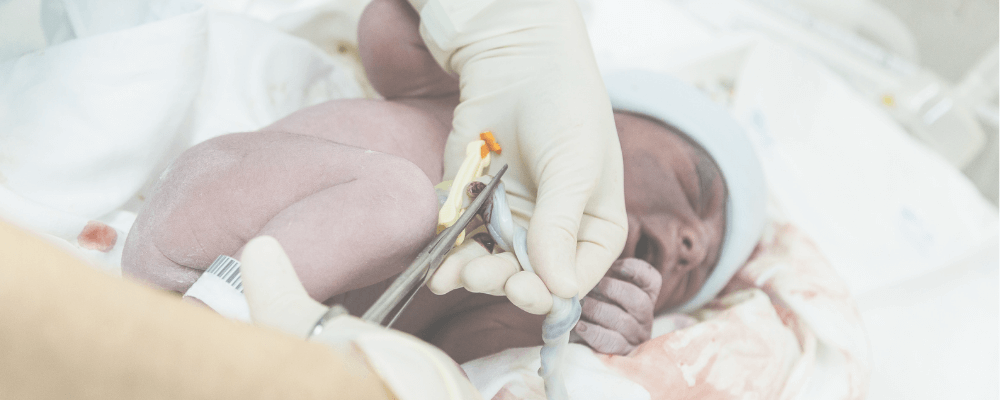The American Heart Association and The American Academy of Paediatrics have recently updated their guidelines1 with 6 ‘take-home’ messages for Umbilical Cord Management in term and preterm babies. This update follows recent ILCOR-directed systematic reviews, 2 of which were reviewed here recently2,3
The ‘take-home’ messages are:
- For term and late preterm newborn infants ≥34 weeks’ gestation who do not require resuscitation, delayed cord clamping (≥30 seconds) can be beneficial compared with early cord clamping (<30 seconds). Class of Recommendation 2a (Moderate), Level of Evidence B (Randomised)
- For term and late preterm newborn infants ≥34 weeks’ gestation who do not require resuscitation, intact cord milking is not known to be beneficial compared with delayed cord clamping (≥30 seconds). Class of Recommendation 2b (Weak), Level of Evidence B (Randomised)
- For nonvigorous term and late preterm newborn infants (35–42 weeks’ gestation), intact cord milking may be reasonable compared with early cord clamping (<30 seconds). Class of Recommendation 3 (No Benefit), Level of Evidence C (Limited Data)
- For preterm newborn infants <34 weeks’ gestation who do not require resuscitation, delaying cord clamping (≥30 seconds) can be beneficial compared with early cord clamping (<30 seconds). Class of Recommendation 2a (Moderate), Level of Evidence B (Randomised)
- For preterm newborn infants between 28 and 34 weeks’ gestation who do not require resuscitation and in whom delayed cord clamping cannot be performed, intact cord milking may be reasonable. Class of Recommendation 2b (Weak), Level of Evidence B (Randomised)
- For preterm newborn infants <28 weeks’ gestation, intact cord milking is not recommended. Class of Recommendation 3 (No Benefit), Level of Evidence B (Randomised)
SurePulse:
These updated guidelines are of particular interest to SurePulse who’s vision is to give clinicians and healthcare providers the tools to provide optimal newborn care. The SurePulse VS Cap comprises an optical sensor integrated into a thermo-protective single-use cap which has been designed to provide clinical teams with accurate, reliable, and timely information in the critical moments after birth. SurePulse VS’ wireless approach means that baby’s heart rate can be monitored straight after birth, supporting optimal care during stabilisation and, where necessary, resuscitation.
References:
- Yamada, NK et al. 2023 American Heart Association and American Academy of Pediatrics Focused Update on Neonatal Resuscitation: An Update to the American Heart Association Guidelines for Cardiopulmonary Resuscitation and Emergency Cardiovascular Care; Circulation; Volume 149, Issue 1, 2 January 2024; Pages e157-e166
- Seidler, AL et al. Deferred cord clamping, cord milking, and immediate cord clamping at preterm birth: a systematic review and individual participant data meta-analysis; The Lancet, Volume 402, Issue 10418, 2209 – 2222
- Seidler, AL et al. Short, medium, and long deferral of umbilical cord clamping compared with umbilical cord milking and immediate clamping at preterm birth: a systematic review and network meta-analysis with individual participant data; The Lancet, Volume 402, Issue 10418, 2223 – 2234
